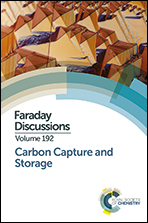On the potential for BECCS efficiency improvement through heat recovery from both post-combustion and oxy-combustion facilities
Abstract
In order to mitigate climate change to no more than 2 °C, it is well understood that it will be necessary to directly remove significant quantities of CO2, with bioenergy CCS (BECCS) regarded as a promising technology. However, BECCS will likely be more costly and less efficient at power generation than conventional CCS. Thus, approaches to improve BECCS performance and reduce costs are of importance to facilitate the deployment of this key technology. In this study, the impact of biomass co-firing rate and biomass moisture content on BECCS efficiency with both post- and oxy-combustion CO2 capture technologies was evaluated. It was found that post-combustion capture BECCS (PCC-BECCS) facilities will be appreciably less efficient than oxy-combustion capture BECCS (OCC-BECCS) facilities. Consequently, PCC-BECCS have the potential to be more carbon negative than OCC-BECCS per unit electricity generated. It was further observed that the biomass moisture content plays an important role in determining the BECCS facilities’ efficiency. This will in turn affect the enthalpic content of the BECCS plant exhaust and implies that exhaust gas heat recovery may be an attractive option at higher rates of co-firing. It was found that there is the potential for the recovery of approximately 2.5 GJheat per tCO2 at a temperature of 100 °C from both PCC-BECCS and OCC-BECCS. On- and off-site applications for this recovered heat are discussed, considering boiler feedwater pre-heating, solvent regeneration and district heating cases.
- This article is part of the themed collection: Carbon Capture and Storage

 Please wait while we load your content...
Please wait while we load your content...